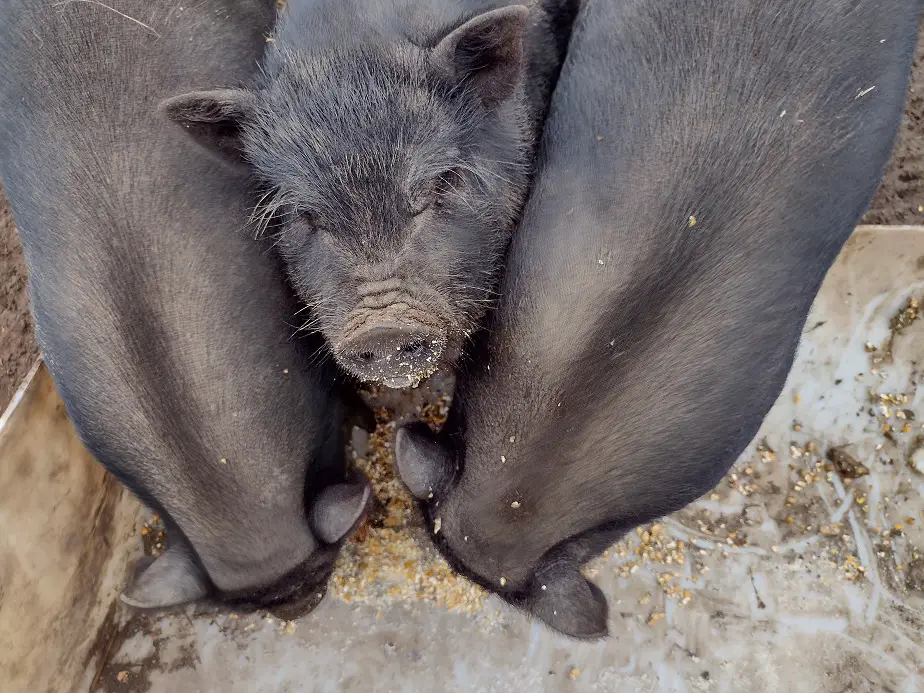I feed my pigs on corn and oats mainly, and they look pretty good.
A pig fed with corn should get 1-3 percent of its body weight daily in the grain. Depending on age, breed, and other diet items, the intake will vary greatly. A pig can have up to 80 percent of its diet be corn. Corn itself should not be free-fed. Too much corn results in fat, unhealthy pigs.
So many things affect the rate of feed. I’ll go over what I know so you can be a better judge of what and how much to feed your pigs.
Feeding Pigs on Corn
If you’re feeding corn to pigs, you’re probably trying to save a little money. Most pig feeds have corn as the main ingredient, but it’s usually cheaper to make your own pig ration. That’s what we do and it works well.
A standard meat pig ration includes about 650 pounds of corn from weaning to butcher at 7 months old, as well as 100 pounds of soybean for protein. Pigs raised on pasture or with other quality fodder may only need 200 pounds of corn.
I don’t like free-feeding anything to my pigs. it’s a great way to have a lot of waste. Pigs spill a lot, and will over-eat. When pigs gorge themselves, they don’t utilize all of the feed. Daily feeding morning and evening is optimal to keep feed costs down and pig growth up.
To properly feed your pigs, you need to learn to have an idea of their weight. Every breed is different, and it can differ among a breed based on genetics. Growing pigs are fed 2-4 percent of their body weight daily in dry feed.
Commercial breed pigs get approximately 1 pound of feed per month of age daily. Feed them twice a day and be sure they clean up their food after half an hour. Usually, if pigs aren’t finishing all their food in one sitting, they are getting too much.
To a point, you have to eyeball it. You need to look at the pig and decide if it’s on the skinny side of getting a bit round. Lean isn’t bad. Boney isn’t good. A pig should have some muscular shape to it. Get another pig person to stop by several times to help you judge your animal’s structure and condition.
Eventually, you will get a sense for the look of a decently fed pig and will know how much to feed within your system and methods. Also, look at the animal’s behavior. Although pigs are usually interested in food, you can tell when a pig is hungry. Hungry pigs get rowdy and grumpy. You Have to keep an eye on the pig’s body weight.
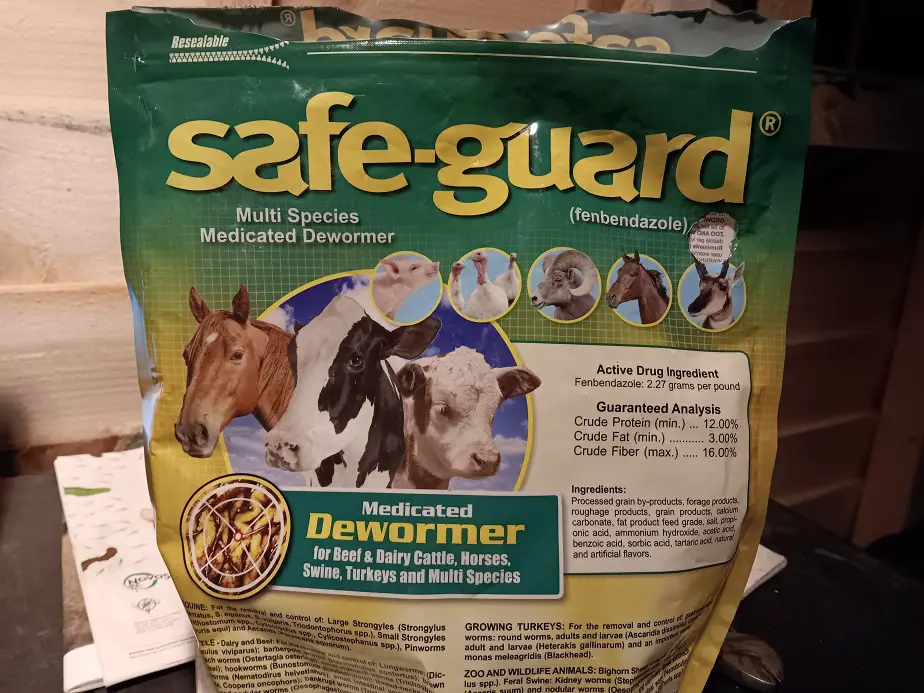
One thing you need for pigs, no matter your raising system, is a parasitic worm treatment. The best swine dewormer is Fenbendazole. It’s known by the brand name Safeguard. Safeguard is available as a medicated corn/alfalfa pellet. It’s the only way I can worm my pigs since they won’t stand still for an injection of Ivermectin. It’s easy and cheap.
- There is a stronger pellet for swine only. Here it is on Amazon
- There is a weaker pellet for general barnyard livestock, including swine. Here it is on Amazon.
I use the multi-species version because it’s what’s available in my local store and I can use it for my chickens too. It’s the most effective swine wormer and the easiest to administer. I use it on all weaned piglets and adults twice a year. Don’t go without it.
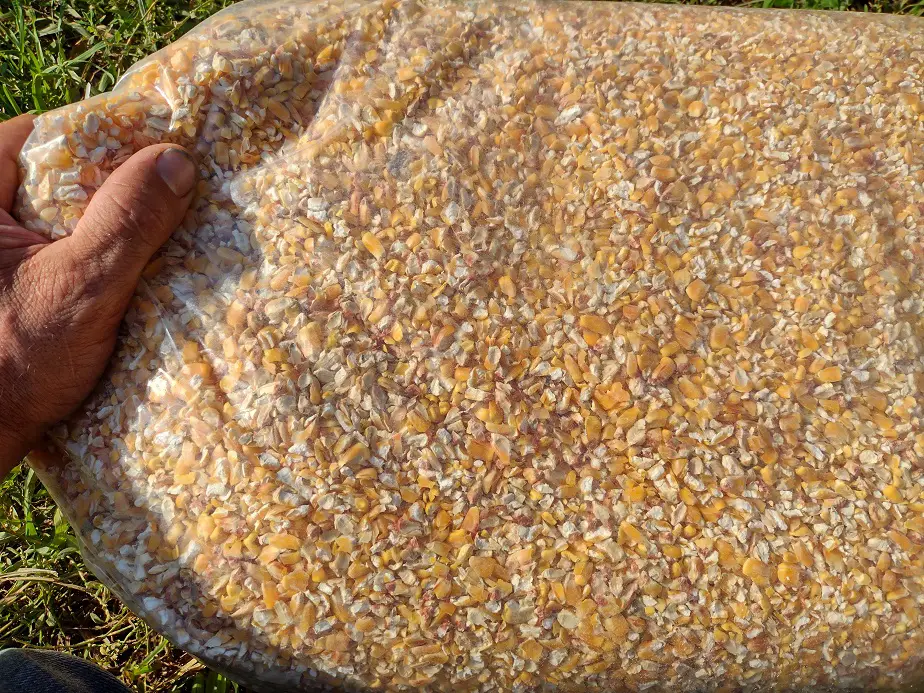
Cracked Corn vs Whole Corn for Pigs
Cracked corn is slightly more digestible to pigs than whole corn. The processing breaks down some of the hull, which contains hard-to-digest starch, protein, and fibers so they can be digested a bit better. My experience shows about a 2 to 3 percent difference in the feed function of cracked ve whole corn.
Some published data says there’s a 10 percent difference, but I haven’t seen that much personally. If cracked corn costs 10 percent more than whole corn, I see little reason to buy it because it’s probably not worth the gained digestibility. Plus, pigs waste less when it’s whole.
I don’t haver numbers on that, but I recently brought up the topic among a group of small-time pig farmers, and most agreed. When pigs spill cracked corn, the smaller chunks tend to get mixed in the dirt and left alone. With whole corn, pigs go hunting through the dirt for it.
I guess it’s just more worth it to them to scrounge and dig for corn if it’s bigger chunks. Now, if you soak, ferment, or roast the grain, you’ve increased the digestibility by at least 10 percent, boosting the energy value and useable protein in the grain.
That will be equal to or better than fine-ground corn. Fine-ground corn, like cornmeal or usually a bit finer, has around 10 percent better digestibility (more useable nutrition) than cracked corn. I personally love fermenting grains. It’s easy, only requires water and buckets, and makes whole corn a good feed.
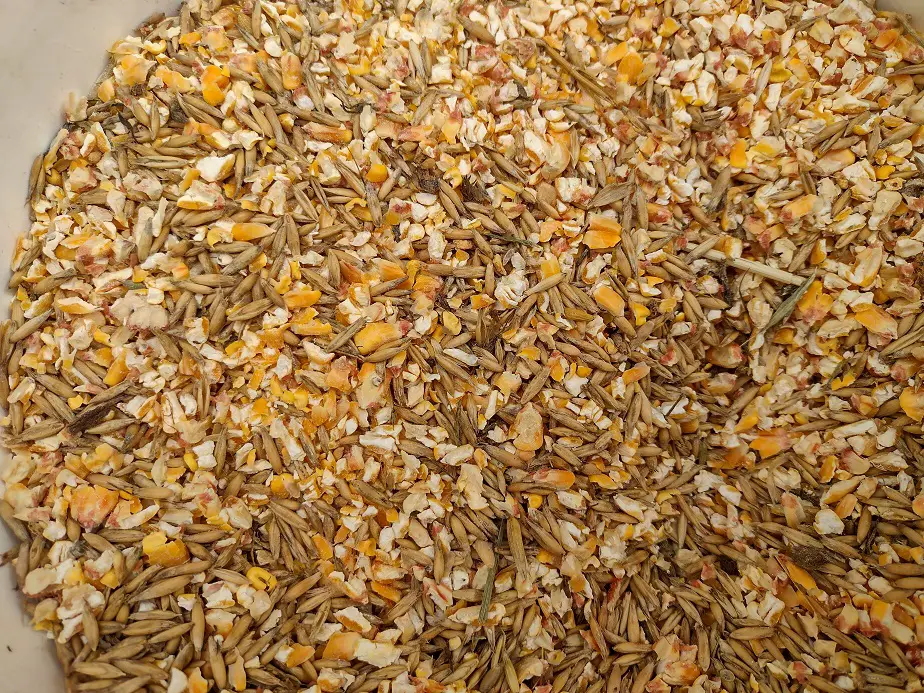
Is Corn the Best Grain for Pigs?
Corn is one of the best grains for pigs, and the most popular. It’s more digestible than most grains, is high in energy, and is cheaper. Common feed corn is low in protein, vitamins, and essential minerals for pigs. Older varieties of corn are higher in protein and vitamins and are sometimes grown as a specialty feed.
Most any grain will work for pigs, given a properly balanced diet, but corn is the more affordable grain in the US. Oats, barley, sorghum, wheat, and sunflower are less commonly used for pigs. Other grains are less productive or are specialty crops and are usually either more expensive or harder to get.
I do like feeding oats, and the price from the farmer is usually about the same. But, most farm supply stores have a lot higher markup on oats. Whole oats (with the hulls) are higher in protein and fiber and digest very well after fermenting. They’re just harder to get sometimes.
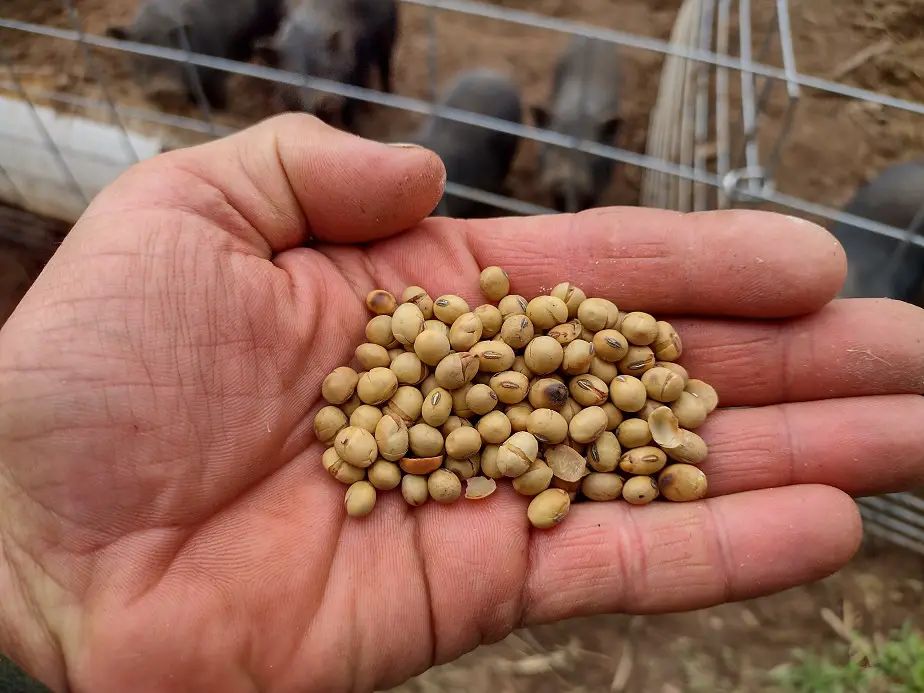
How to Balance a Corn Diet for Pigs
If you plan on feeding straight corn to a pig, that’s okay, but you need to give them a source of fiber, vitamins, and the lacking minerals. You want to give them something with more protein in it too.
The simplest way to balance out a corn diet for pigs is to pasture them. Pastured pigs, or pigs fed fresh-cut fodder have a pretty good vitamin and mineral content in their diet, and definitely plenty of fiber. The next thing to consider is protein because most corn is pretty low in protein.
Fermenting corn is awesome for boosting protein content. Fermenting properly can provide most of the protein that pigs need. If you feed fermented corn and table scraps, that’s probably all you need for a pig’s diet. Pretty darn simple isn’t it?
So if we’re talking about a normal-sized commercial hog, that’s 650 pounds of corn, fermented, plus daily table scraps and a big salad of wild greens. It’s a crude but functional diet.
If you have a local grain elevator (old-fashioned farm supply store) you can get a bag of roasted soybean, peanut, or field pea. One bag of either is half of the protein needed for a commercial breed pig to be butchered at 6 or 7 months old, right on the normal timeframe.
Related articles:

